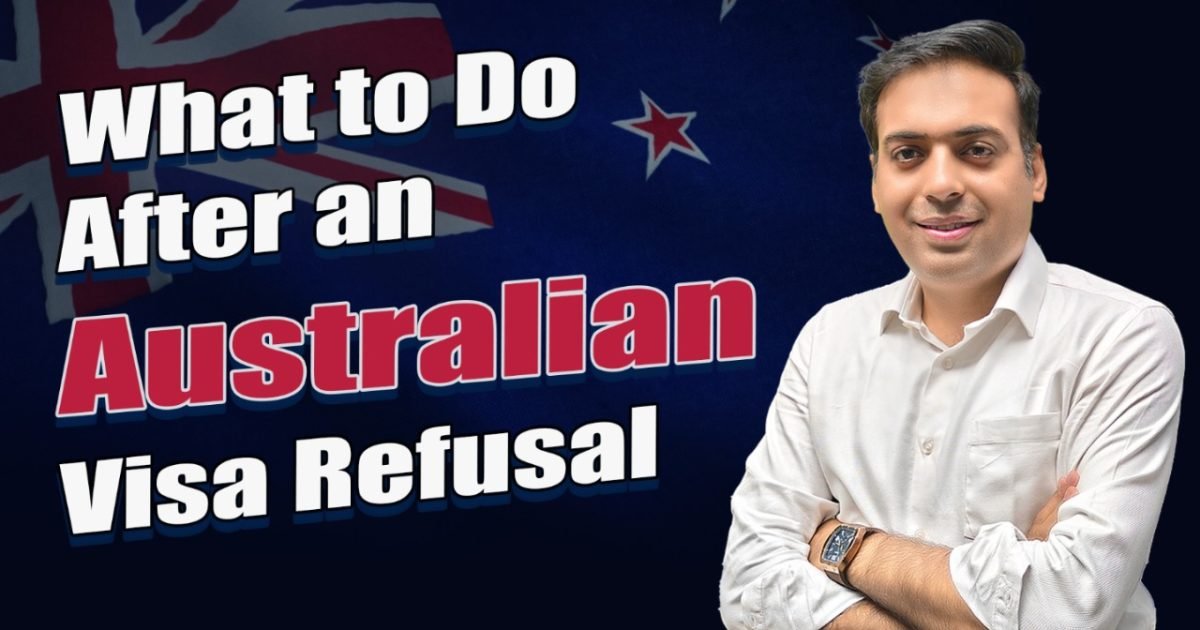Table of Contents
ToggleWhat to Do If Your Australian Visa Gets Refused – A Comprehensive Guide by Globexa Immigration

Visa refusal can be a disheartening experience, especially when you’ve invested time, money, and dreams into planning your future in Australia. But a visa refusal is not the end of the road. In many cases, it can be a stepping stone to understanding the process better and making stronger applications in the future.
At Globexa Immigration, we help clients understand why their visa was refused and what they can do next to improve their chances. This guide outlines practical steps to take after receiving an Australian visa refusal and how you can move forward strategically.
1. Understand the Reason for Refusal
The first step is to read the refusal notice carefully. The Department of Home Affairs provides a detailed explanation, referencing specific clauses in immigration law (Migration Act and Regulations).
Common reasons for refusal include:
Incomplete or inconsistent documents
Failure to meet Genuine Temporary Entrant (GTE) criteria
Insufficient financial evidence
Poor ties to home country
Inadequate English language proficiency
Character or health issues
History of prior refusals
Tip: Save a copy of your refusal letter—it is essential for future applications or appeals.
2. Do Not Reapply Immediately
A common mistake applicants make is rushing into a reapplication without addressing the reasons for refusal. This can lead to another rejection.
Instead:
Take time to analyse the refusal letter
Seek professional advice
Ensure all issues are addressed before submitting a new application
3. Seek Professional Advice
Getting assistance from a registered migration agent or immigration consultant like Globexa Immigration can make a significant difference. We’ll:
Review your refusal letter and application
Identify weaknesses or errors in your previous submission
Recommend the best path forward (appeal, reapply, or choose a different visa category)
4. Explore Your Review and Appeal Options
Depending on your visa type and location (onshore or offshore), you may have the right to appeal to the Administrative Appeals Tribunal (AAT).
Who Can Apply for a Review?
If you were in Australia at the time of application/refusal: You may be eligible to appeal to the AAT within 21 days of the decision.
If you applied from outside Australia, appeal options are limited unless a sponsor or relative in Australia has appeal rights.
Note: The AAT doesn’t reverse decisions lightly. You must provide compelling new evidence or clarify previously misunderstood facts.
5. Gather Stronger Evidence
If you plan to reapply or appeal:
Prepare clear, well-organized documentation
Include stronger ties to your home country (property, employment, family)
Demonstrate genuine reasons for travel or study
Provide updated bank statements, employment letters, or academic records
Add a compelling GTE statement or personal explanation letter
6. Consider Alternative Visa Pathways
Sometimes, your current visa stream might not be the best fit for your goals. Based on your profile, we may recommend switching to:
Another student visa subclass
A visitor visa, if your intent is short-term
A skilled migration or partner visa, depending on eligibility
Globexa Immigration can help assess your case for alternative visa categories that may offer better success rates.
7. Avoid DIY Applications After Refusal
A second refusal can further complicate your immigration history. Working with an experienced immigration consultant:
Reduces the risk of repeat errors
Helps prepare a more convincing application
Ensures your documentation meets Australian immigration standards
At Globexa Immigration, we’ve helped dozens of clients recover after refusals and secure successful outcomes.
8. Stay Positive and Act Strategically
It’s normal to feel discouraged after a visa refusal, but remember—thousands of applicants face this setback every year and still achieve their immigration goals with the right guidance.
Key things to keep in mind:
A visa refusal is not permanent
You may still have options
With a careful, strategic approach, you can rebuild your case
Final Thoughts
Visa refusals can feel like a dead end, but they are often just detours. With expert advice, a thorough review, and a strong new application, your Australian dream can still become a reality.
If you’ve recently faced an Australian visa refusal, reach out to Globexa Immigration today. Our expert team will:
We’ll carefully examine the reasons behind your visa rejection.
You’ll receive expert guidance tailored to your situation and goals.
Together, we’ll craft a more compelling, error-free application for a better outcome.
Contact us now for a consultation. Don’t let one refusal stop your journey.

